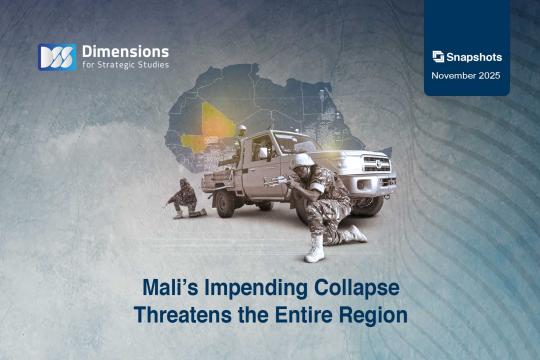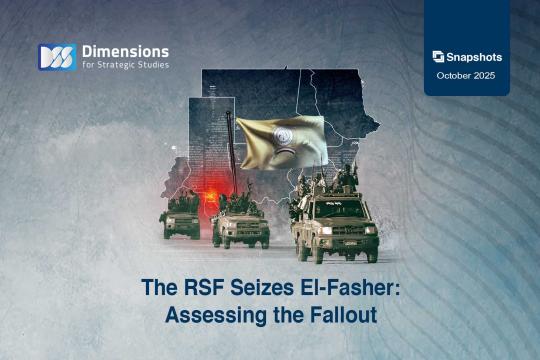
IS Strikes Iran on Anniversary of Suleimani Killing
2024-01-052052 view
On the afternoon of Wednesday, January 3, 2024, two explosions went off in quick succession near the grave of the late Iranian Revolutionary Guards leader Qassim Soleimani in the city of Kerman, where large crowds had gathered to mark the fourth anniversary of his killing. The two explosions killed 103 civilians and wounded at least 280 people.
Speculation abounded about who was responsible for the massacre. The Islamic State group (IS) soon issued a statement claiming responsibility. That came as a surprise to analysts and observers of the hardline group, raising the questions: What does IS want from Iran, and why now?
Keeping its Enemies Close
Despite being ruled by Shiite clerics, Iran has amply demonstrated its willingness to host radical Sunni militants when doing so suits its interests. It has long been known to facilitate the movement and residence of senior Al-Qaeda figures on its territory when the interests of both parties intersect. Since 2003, it has kept Mohamed Salah al-Din Zaidan, a senior Al-Qaeda commander nicknamed Saif al-Adl, under house arrest along with several other senior figures in the organization, including Hamza bin Laden. A prisoner exchange deal between Al-Qaeda and Iran in 2010 led to the release of Iranian diplomat Hashmatullah Zadeh, who was kidnapped in northern Pakistan in 2008, in exchange for the release of Osama bin Laden’s sons Hamza, Othman and Muhammad, and their mother Khairiya Saber, along with senior commander Nasser Al-Wahishi and others.
Iran also reached an deal allowing Saif al-Adel to work for al-Qaeda from its territory on the condition that he would not harm Iran’s security. Despite another exchange deal in 2015 that included the release of Iranian diplomat Nour Ahmed Nikbakht, who was kidnapped in Yemen in 2013, Saif al-Adl - despite reaching the border - announced his desire to stay in Iran and work from there against Western interests. Indeed, Saif al-Adel remains able today to move between Afghanistan and Iran, and is seen as the de facto leader of al-Qaeda after the killing of Egyptian cleric Aymen al-Zawahiri - although this has not been officially announced, due to disagreements about him and his relations with Iran.
The Islamic Republic also supported the Taliban during its war with the United States, despite their ideological and sectarian differences. This reflects Iran’s appreciation that it needs to find enough leverage with these groups to prevent them, at the very least, from launching attacks on its territory, and to help it achieve stability.
All this confirms that Iran is able to cooperate with jihadist organizations. Accordingly, many researchers have claimed that there is a similar relationship between Iran and IS, consisting of Iran refraining from targeting IS interests and carrying out attacks that harm the interests of its opponents, actually benefiting Iran.
However, such claims have little basis in reality. They ignore the mutual hostility between the two parties, represented in continuous attacks against pro-Iranian militias and the Revolutionary Guards in Iraq and Iran, as well as repeated IS attacks on civilian sites on Iranian soil.
Revenge and Takfir
While the IS claim of the Kerman bombing surprised some analysts, it bore all the hallmarks of IS both towards Iran and towards Iranian militias in Syria and Iraq. Indeed, such operations on Iranian soil are not unprecedented. Between July 8 and December 15 of last year, IS carried out seven separate attacks in Iran, in the cities of Zahedan, Sistan, Shiraz, Pampur and Rask in Balochistan, and Nourabad in Fars Province. The most deadly of these attacks was one targeting the Shah Cheragh, a Shiite shrine in Shiraz, which killed six civilians and wounded four others. The other attacks targeted parked police cars.
These attacks confirm that IS has cells inside or on the borders with Iran. They are not necessarily deployed in specific locations, but enter Iran from when from neighboring countries when the organization wants them to carry out bigger attacks. IS is present in border areas of at least three countries neighboring Iran, meaning that the organization is able to enter the country and carry out operations there.
The greatest such threat is represented by the organization’s cells in Pakistan. IS has numerous cells distributed throughout its western Balochistan province, bordering Iran. The same is true of Afghanistan, where the organization has been active in various provinces bordering both Pakistan and Iran, such as Herat, Jawzjan, Badakhshan, Kunar, and Farah. These provinces witnessed various operations throughout 2023. In the same context, Iran has repeatedly protested to the Taliban government over its failure to control the borders and to prevent Afghan refugees from illegally entering its territory.
In addition, IS is able to enter Iran illegally smuggling routes from Iraq, notably from Diyala governorate’s Jalawla district, where the organization has many cells, allowing it to access Iran’s western provinces of Kermanshah and Kurdistan.
The Gaza Effect
On January 4, IS media outlet the Al-Furqan Foundation broadcast an audio recording by the group’s spokesman Abu Hudhayfa Al-Ansari, entitled “And Kill Them Where You Find Them”. In his address, he explicitly stated the group’s position on Iran and the Shiite militias, calling on Palestinian factions and Sunni militant organizations to sever their relationships with the Islamic Republic and exact “revenge” for Muslims killed by Iranian-backed militias in Iraq, Syria and Yemen.
Concurrently, IS launched a new series of operations under the same title. As of the time of writing, it has claimed at least 30 operations around the world as part of this campaign, the most notable of which was the deadly double suicide bombing in Kerman.
The extremist group has announced several similar campaigns since 2012, when it carried out a series of attacks in Iraq under the name “Demolishing the Walls”. In 2019, it announced a string of operations also called “Kill Them Where You Find Them”, followed by “Raids of Attrition” in 2020 and finally the “Revenge of the Two Sheikhs” campaign in 2022.
In his latest speech, the IS spokesman linked his calls for attacks against Western and Israeli interests in cities around the world with calls to target Iran, which IS sees as investing in Palestinian blood for the benefit of its own expansionist project in the region.
Judging from previous patterns, the statement suggests that the organization is preparing operations targeting civilian sites with explosive devices, stabbings and suicide bombings, possibly in a global escalation against these countries in revenge for their policies on Israel’s assault on Gaza. Operations by security services in Germany, the Netherlands, Austria, Denmark, and France since December 24 support this thesis; authorities have arrested at least 15 people in these countries on charges of preparing attacks on New Year’s celebrations, inspired or planned by IS.
The latest attack in Iran is likely a result of the capacity of IS to cross Iran’s borders and carry out operations inside the country. Its claim of responsibility for the operation also fits with its ideological conviction, since the founding of its precursors in Iraq, that Shiites are infidels who deserve bloody vengeance for their violations against Sunnis in Iraq and Syria.
The Kerman operation was also consistent with IS calls for lone wolf attacks around the world in support of the people of Gaza, targeting first and foremost supporters of Israel but also Iran. This reflects the organization’s worldview, which sees of all other armed groups and political regimes as multiple sides of the same problem – one that can only be resolved through violence.





